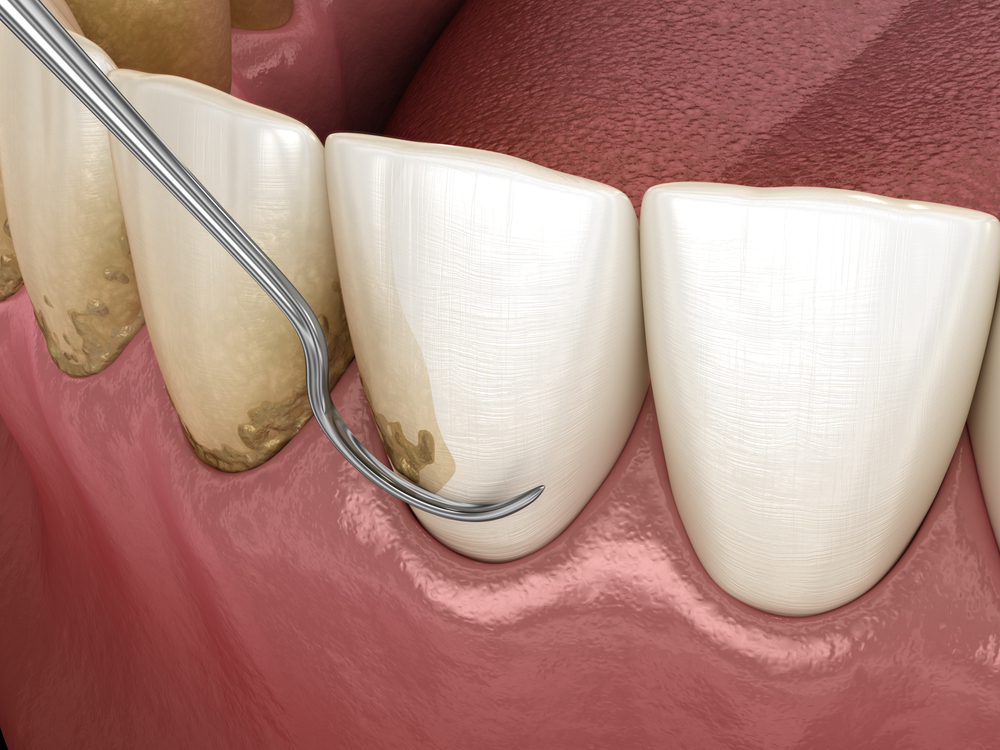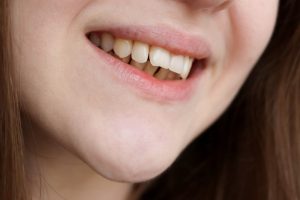
Dentleon İzmir Bornova, Çiğli, Güzelbahçe, Bayraklı Özel Diş Kliniği
What is Curettage, How is Dental Curettage Performed?
21 September 2025

Table of Contents
What is Curettage, How is Dental Curettage Performed?
How is Curettage Treatment Performed?
What Should Be Considered After Curettage?
Frequently Asked Questions About Curettage
Who is Dental Curettage Treatment Applied to?
Can Curettage Be Performed on All Teeth at the Same Time?
Does Curettage Procedure Hurt?
Are stitches performed in curettage?
What is Curettage, How is Dental Curettage Performed?
Dental health is not only important for an aesthetic smile but also for our overall well-being. Oral and dental health problems can also trigger many systemic diseases such as cardiovascular diseases and digestive problems. Gum diseases, in particular, are one of the biggest causes of tooth loss in adults. Different treatment methods are applied to stop the progression of these diseases and regain gum health.
One of the most effective of these methods is curettage treatment. Curettage is a non-surgical yet deep cleaning procedure that focuses on removing bacteria and tartar accumulated in the gum pockets. It strengthens the gums, reduces inflammation and prevents future tooth loss.
What is Curettage?
Curettage is a special dental treatment method used in the treatment of gum diseases that provides deep cleaning. While normal tartar cleaning only removes tartar and plaque on the visible surface of the teeth; Curettage goes under the gums and cleans the bacteria, inflammation and hardened tartar accumulated in the gum pockets.
- During the curettage procedure, plaque and tartar are removed with tools called special curettes by entering the gum pocket.
- In this way, the gum tissue is reattached to the tooth in a healthy way.
- The treatment not only helps the gums look healthier aesthetically but also prevents bone loss and tooth loss in the future.
Curettage doesn’t just solve the problem at hand; It also protects gum health and prevents more serious problems that may arise in the future. It is one of the most effective methods to stop the progression of gum diseases, especially when applied at an early stage.
Why is Curettage Performed?
The main purpose of curettage is to stop the progression of gum diseases and restore gum health. Gingivitis, which is seen in many people today, and its advanced stage, periodontitis, negatively affect not only the gums, but also the tooth roots and jawbone. If left untreated, it can lead to permanent tooth loss.
Curettage is one of the most effective methods to prevent the progression of these diseases and control existing problems. When applied regularly, it both protects oral health and provides an aesthetically healthier smile.
The reasons for performing curettage are:
- Cleaning bacterial plaque and tartar accumulated in gum pockets: Thanks to deep cleaning, gum tissue regains its health.
- Preventing bleeding gums and inflammation: Bleeding and swollen gums are treated and returned to their normal form.
- Reducing bad breath: When bacteria and inflammation are removed, bad breath largely disappears.
- Stopping the progression of gum recession: Curettage stops the recession and allows the teeth to stay in the mouth for a longer time.
- Preventing tooth loss: With regular curettage, the jawbone and tooth tissues are preserved, minimizing the risk of tooth loss.
How is Curettage Treatment Performed?
Curettage treatment is a professional procedure performed by specialist periodontology physicians. Although it may seem scary for most patients, pain is not felt during the procedure as it is performed under local anesthesia.
The steps of the curettage process are as follows:
- Examination: First, the patient undergoes a detailed oral and dental examination. The presence and depth of gum pockets are evaluated.
- X-ray: In cases deemed necessary, x-rays are taken and the condition of the gum and bone tissue is examined.
- Anesthesia administration: Local anesthesia is administered to make the patient feel comfortable during the procedure.
- Deep cleaning: Plaque, tartar and bacteria accumulated in the gum pockets are carefully cleaned with special tools called curettes.
- Root planing: Rough surfaces on the tooth roots are cleaned and smoothed. Thus, it becomes difficult for bacteria to reattach.
- Post-procedure care: After the curettage is completed, the patient is given appropriate antibacterial mouthwash, medication, or hygiene recommendations.
Completing these stages ensures that the gum tissue attaches to the tooth in a healthy way. With regular check-ups, the success of the treatment is maintained for a long time.
What Should Be Considered After Curettage?
After curettage treatment, it is very important to take care of oral hygiene. The main points to be considered after treatment are:
- Avoid very hot or very cold foods for the first 24 hours.
- Light bleeding or tenderness may occur after the procedure, this is normal.
- Use the medications recommended by your doctor regularly.
- Pay more attention to brushing and flossing.
- Do not skip your control appointments.
Frequently Asked Questions About Curettage
Who is Dental Curettage Treatment Applied to?
Curettage treatment is an effective method that is usually applied in the early and middle stages of gum diseases. It is especially recommended for people who experience the following symptoms:
- Those with bleeding gums and swelling
- Those who complain of bad breath
- Those who experience gum recession
- Those who continue to have problems despite regular tartar cleaning
- Those with deepening and plaque accumulation in the gum pockets
This treatment aims to restore gum health. When applied early, it can prevent tooth loss and extend the life of teeth.
Can Curettage Be Performed on All Teeth at the Same Time?
Curettage treatment is planned according to the patient’s gum health and the condition of the pockets.
- If gum disease is widespread throughout the mouth, it can be applied to all teeth at the same time.
- If the problem is only in certain areas, only the problematic teeth can be treated.
- In some patients, the procedure is completed in a single session, while in advanced cases, it can be divided into several sessions.
This planning depends entirely on the result of the dentist’s examination and the patient’s needs.
Does Curettage Procedure Hurt?
Since curettage treatment is performed under local anesthesia, the patient does not feel any pain during the procedure. Thanks to modern methods, it is completed very comfortably.
- There may be mild sensitivity or small leaks in the gums after the procedure.
- This is normal and usually goes away completely within a few days.
- If necessary, the physician may recommend painkillers or mouthwash to make the healing process comfortable.
Are stitches performed in curettage?
No, curettage treatment is not a surgical operation. Therefore, no stitches are made during the procedure.
- The purpose of curettage is to clean the bacteria and tartar accumulated in the gum pockets to make the gum tissue healthy.
- Therefore, the healing process after the procedure takes place very quickly and naturally.
In addition to regular check-ups to protect your oral and dental health, DentLeon’s Izmir teeth whitening service in Izmir can also be preferred for those who want to achieve an aesthetic smile.
Recent Posts



